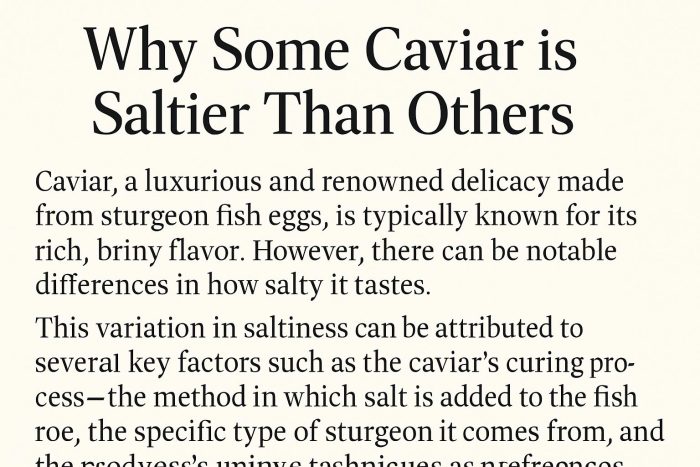Understanding the Saltiness of Caviar
Caviar, often regarded as a delicacy, varies in flavor profiles, with saltiness being one of the key characteristics. Several factors contribute to the differing salt levels in caviar, influencing its taste and appeal.
The Role of Salt in Caviar Preservation
Historically, salt played a crucial role in preserving caviar and ensuring its longevity. The primary purpose of salting was to prevent the fish roe from spoiling. Over time, this preservation method has evolved, with modern techniques allowing more control over salt content. The degree of saltiness in caviar can significantly affect its flavor, texture, and overall quality.
Types of Caviar and Salt Content
Different types of caviar exhibit varying salt levels. Malossol caviar, translating to “little salt,” is a popular choice known for its delicate balance, containing less than 5% salt. Other varieties may have higher salt concentrations, which are sometimes preferred for their more robust flavors. The amount of salt used not only impacts the taste but can also alter the texture, making it firmer or softer.
Methods of Salting
Several methods are employed to salt caviar, such as dry salting and brining. Dry salting, where salt is directly applied to the roe, typically results in a saltier product. Conversely, brining involves soaking roe in a saline solution, allowing for more precise control over the saltiness. The choice of method depends on desired taste profiles and production traditions.
The Impact of Regional Preferences
Salt levels in caviar can also reflect regional preferences and traditions. For instance, Russian and Iranian caviar producers may favor different salting techniques or levels to cater to local tastes. Understanding these regional variations can enhance one’s appreciation of caviar, offering insight into cultural and culinary practices.
For more in-depth information on caviar production and salting methods, you may explore resources from industry experts such as the Marky’s and Petrossian websites. These sources provide a wealth of knowledge on the subtleties of caviar preparation and enjoyment.
In conclusion, the saltiness of caviar is influenced by historical preservation techniques, the type of caviar, salting methods, and regional preferences. Understanding these factors can enhance one’s appreciation of this luxury delicacy and guide preferred selections based on personal taste.

